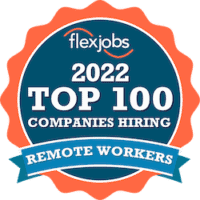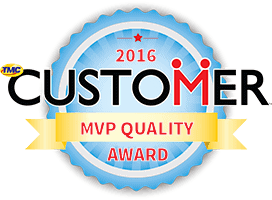A contact center thrives through the use of technology. In 2021, contact center customers expect a company’s technology to meet the demands of the modern age. Fortunately, the right contact center technology can help agents and management achieve excellent customer service consistently and efficiently.
Contact center technology is sure to keep advancing with no end in sight. It is crucial that contact centers keep up with the ever-advancing tools at their disposal so they do not get left behind. Contact centers that utilize the latest contact center technology trends will see clear results in positive customer service and customer experience feedback.
Contact Center Customer Support Benefits from Technology
An important goal of a contact center is to ensure customers have a good and pleasant experience with each interaction. With developing contact center technologies, the customer experience can constantly improve. Customers can feel energized and happy after their contact center experiences.
- Contact Center Metrics (Business Intelligence): Contact centers use business metrics that keep track of important data and performance indicators. These metrics can track call performance levels like customer wait times, customer satisfaction scores, the number of active calls at a time or in a day, and more.
- Blended Outbound and Inbound Calling: Contact centers can seamlessly blend outbound and inbound calling technology so that no agent is stuck in a role where they do not thrive. The best contact centers utilize their agents effectively. An agent better suited for outbound calling can call out while another handles inbound calls. The flow prevents productivity disruptions.
- Interactive Voice Response (IVR) technology: Contact centers can use a pre-recorded guide that provides customers with an informative menu. This menu can quickly connect customers with their intended target or destination. IVR can also gather information for the customer, preventing long wait times.
Technology goes hand in hand with ever-increasing customer demands. Fortunately, a contact center can stay ahead of the curve by taking advantage of the vast amount of useful technology available today.
Contact Centers Should Take Advantage of Artificial Intelligence
Conversational AI is going to feature strongly in contact centers in the very near future. Examples of conversational AI include chatbots that can hold conversations with customers over text windows online or over the phone. These AI bots can understand language and respond appropriately to a customer’s words.
This kind of technology is very different from speaking with a basic robot and answering yes-or-no questions. Instead, conversational AI processes a customer’s words and determines how to respond naturally, giving customers a personalized experience.
Conversational AI is likely to save businesses billions of dollars in annual costs. Additionally, this technology will make it easier for a company to scale at will and keep teams small.
Some customers prefer to call and speak to a human being. Certain demographics want human-to-human connections in order to feel heard. However, AI technology has incredible capabilities, especially in the contact center and customer service spheres.
Contact center AIs can do more than simply respond to customer inquiries. AI-powered machine learning allows for customers’ specific needs to be met in useful, nuanced ways. An AI can analyze a customer’s voice, speech patterns, and spoken words. If a customer’s voice becomes raised or strained, it becomes clear that an issue has arisen.
Additionally, an AI can rate a contact center agent’s performance based on the agent’s speech patterns, as well. No one is perfect and “uhs,” are common in most people’s vocabulary. However, an AI that keeps track of call quality can help agents improve over time and boost customers’ experiences when they call.
Omnichannel Contact Centers Are the Necessary for the Future of Customer Service
Not all contact center customers today want to get in touch with a customer service agent via telephone. If a contact center utilizes omnichannel software technology, a customer can reach that contact center to ask questions, make suggestions, get information about specific products, and much more through several different channels.
- Traditional telephone calls
- Text messages
- Social media
- Live chat
All of these different channels work together so a customer’s conversation can be picked up through one avenue and continued in another. Additionally, contact center agents can see the entire conversation history across all channels. Many younger customers prefer other types of communication over phone calls. Omnichannel technology is a must in today’s modern world.
About Ansafone Contact Centers
Ansafone Contact Centers is an award-winning BPO provider with 50 years of world-class customer experience and brand care. We are a national call center with omnichannel services, fully equipped to help you with your business and with any special circumstances.
Please request a quote or call 800-510-0514 to learn more about our custom solutions for creating exceptional customer service experiences for your clients. We’re happy to offer insight into what your customers seek from your company’s language offerings and tailored customer solutions.
















